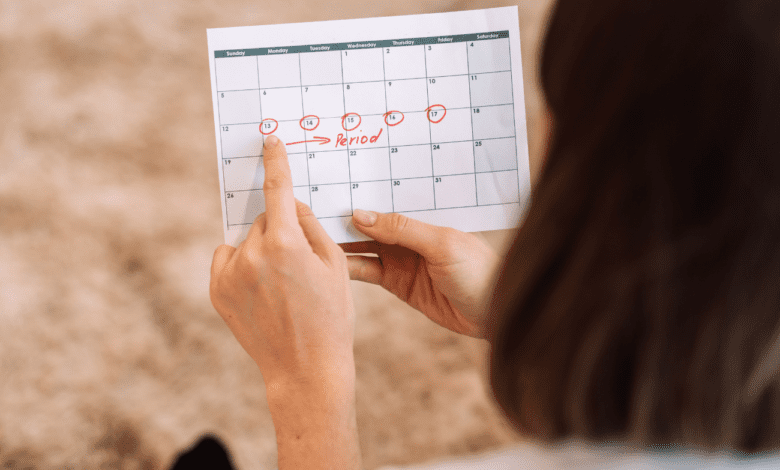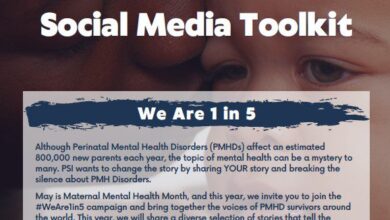Know the Common Signs: Ovulation After Giving Birth

Many new moms understand what the signs of ovulation are after giving birth so they can feel in touch with their bodies and can be prepared to know when to try and get pregnant again if they want to.
The first months of motherhood and the body changes that come with it can look very different for each person, especially regarding fertility rhythms.
Today we discuss all things postpartum fertility and gaining a deeper understanding of physical and hormonal cues which can help new mothers determine the return of ovulation.
If you’re excited to bring a new addition to your family or just want to know how your body works, keep reading to learn more about this important part of the postpartum stage.
When do you start ovulating after giving birth?
Ovulation time is back Possible varies from woman to woman After giving birth. Resumption of ovulation is largely dependent on factors such as breastfeeding, individual hormones, and other factors that come into play during the postpartum recovery.
Every woman’s body is unique, and Individual factors can influence ovulation After giving birth. Some factors include the frequency and intensity of breastfeeding and the mother general health and hormonal balance.
Your healthcare provider can also provide personalized guidance based on your circumstances and help you better understand your fertility patterns during the postpartum phase.
If you are not breastfeeding
For women who are not breastfeeding, ovulation may occur as early as four to six weeks after delivery. The body will gradually return to its regular menstrual cycle after childbirth, and the first ovulation. usually occurs about two weeks before menstruation starting
If you are breastfeeding
For women who exclusively breastfeed their babies, ovulation is more likely to be delayed due to the hormone prolactin responsible for milk production. Prolactin can inhibit the release of certain hormones necessary for ovulation, acting as a natural contraceptive.
However, it is necessary to remember that breastfeeding is not a foolproof form of contraception because ovulation can still occur while breastfeeding and before menstruation returns.


Is it possible to get pregnant while breastfeeding?
The short answer is yes; pregnancy while breastfeeding is very possible.
While breastfeeding can have a suppressive effect on ovulation, it is not a foolproof method of contraception. The hormone prolactinwhich is responsible for producing milk, can delay the return of ovulation and menstruation. When this happens, it is known as lactational amenorrhea.
Many factors can affect when ovulation occurs after you give birth. The frequency and intensity of breastfeeding and the mother’s overall hormonal balance are two of the main ones. As breastfeeding patterns change over time, prolactin levels typically decrease, leading to the return of ovulation.
Some women may experience recovery of their fertile windows relatively early, even when breastfeeding, while others may experience a more extended period of lactational amenorrhea.
If you don’t think you’re ready to get pregnant again, it’s a good idea consider additional methods of contraception. Discussing contraceptive options with a health care provider can help you choose the most appropriate method.
Learn more about birth control options after birth in our Handbook of Postpartum Hormones.


Five main signs of ovulation after giving birth
A woman’s body passes by hormonal changes as it recovers from childbirth and adjusts to the postpartum stage.
- Return of menstruation
- Changes in cervical fluid
- Discomfort in the lower abdomen
- Increase in basal body temperature (BBT).
- Increased libido
Acknowledgment of signs of ovulation after giving birth can be helpful for those trying to conceive again, who want to avoid pregnancy, or just want to understand their fertility patterns in this new phase of life.
1. Return of menstruation
The return of your menstrual cycle is often a sign that ovulation is happening again, but that’s not always true for everyone. Anovulatory cycle can happen, so it’s important to know other signs of ovulation after birth.
It is important to note that the the time of the first postpartum period can vary to women. Some women get their period back within six weeks, while others don’t for several months.
2. Changes in cervical fluid
Around ovulation, the consistency and appearance of cervical fluid changes significantly. During ovulation, the mucus will be bright, slippery, and more elasticsimilar to the texture of egg whites.
If you notice that your cervical fluid has started to resemble this description, then there is a good chance that you have started to ovulate again.
3. Lower abdominal discomfort
Some women experience it mild pelvic pain or pain on one side of the lower abdomen during ovulation. This sensation can serve as a sign that an egg has been released.
4. Basal body temperature (BBT) increases.
Tracking your basal body temperature is a great way to receive important insights into your ovulation patterns. After ovulation, there is a slight increase in your BBTusually from 0.5 to 1 degree Fahrenheit.
Continuously monitor your BBT right after waking up will help you determine the time when you ovulate. Products like Daysy Fertility Tracker o Natural Cycles can make tracking your BBT easier and even consolidate your data into a useful chart.
5. Increased libido
Some women may have a noticeable increase in sexual desire around ovulation. This increased libido is believed to be connected to hormonal changes during the fertile window.
Read next: Three Important Things to Know About Postpartum Sex
remember that Postpartum ovulation patterns can vary greatly in women, and the signs of ovulation experienced may be different. If you’re actively trying to conceive or want to track when you’re fertile, tracking these signs can help you determine your ovulation window.


How to predict ovulation after giving birth
Knowing how to predict ovulation after you give birth can be helpful for women who are trying to conceive or want to better understand their fertility patterns.
The return of regular menstrual cycles and tracking how long they last is one of the most useful ways to track ovulation. Changes in cervical fluid is also one of the most important indicators that ovulation has continued. The mucus should become clear, slippery, and stretchy as ovulation approaches.
Measuring your basal body temperature with a quality thermometer first thing in the morning is also one of the most reliable ways to predict ovulation. A slight increase in BBT indicates that ovulation has occurred.
BBT monitoring over multiple cycles is possible help determine ovulation patterns very big In addition to tracking your BBT, using ovulation predictor kit can give good insight into whether you are ovulating. These kits can detect the luteinizing hormone (LH) surge in the urine, which precedes ovulation.
Some physical signs, such as mild pelvic pain, breast tenderness, and increased libido, will also help you identify whether ovulation is occurring or not. Postpartum ovulation can be irregular and difficult to pinpoint, so it’s helpful to know what to look for and track the many signs over time.
Navigating postpartum fertility by recognizing the signs of ovulation
Acknowledgment of different signs of ovulation after giving birth is an important skill for women in navigating their postpartum fertility journey. If you’re aiming to get pregnant again or want to better understand your body’s rhythms, paying attention to the key indicators we’ve discussed today will help you accurately predict your fertile window.
Every woman’s body is unique, and postpartum ovulation patterns can vary. By being aware of your body’s signals and seeking guidance from your health care provider, you can gain useful insights into your postpartum fertility and empowered to make informed decisions about family planning.






